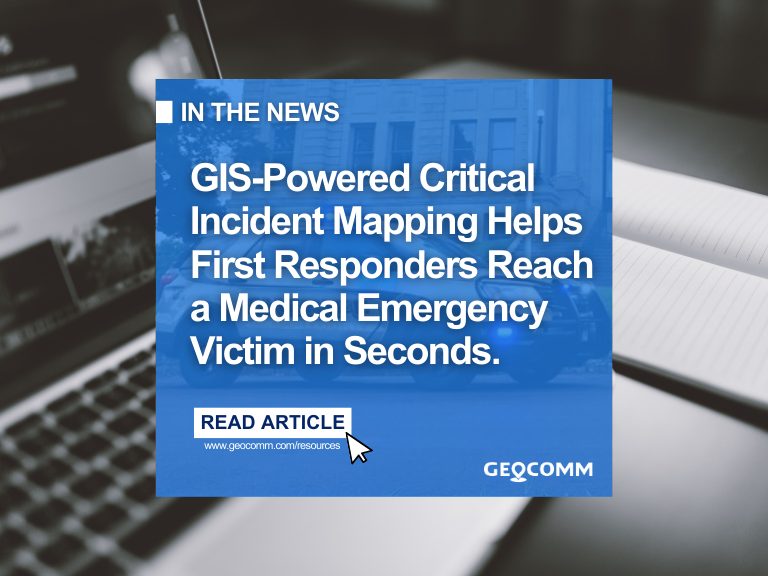GeoComm Releases Public Safety Grade GIS Data Checklist
Consistent and accurate GIS data plays a vital role in showing the location of 9-1-1 callers and Computer Aided Dispatch (CAD) incidents in PSAP mapping software. GIS data becomes even more mission critical with the evolution of NG9-1-1 systems which uses GIS data for routing live 9-1-1 calls. It is critical for GIS data to be Public Safety Grade in order to reduce response times, help save lives, and protect property.
GeoComm is pleased to share this updated checklist aimed at empowering agencies to achieve this high level of Public Safety Grade GIS data accuracy needed in an NG9-1-1 system. This checklist, based on industry best practices and NENA standards, covers key items to consider when working to achieve Public Safety Grade GIS data critical for NG9-1-1. These items include:
Providing education to GIS and PSAP stakeholders
Reviewing data requirements for NG9-1-1
Achieving 98% or great synchronization level between the MSAG, ALI Database, and GIS data
Documenting GIS data management procedures and workflows
And much more
We invite you to CLICK HERE to download this checklist.
“We are excited to provide this checklist as we know that achieving the necessary data quality levels is a common challenge for PSAPs and for GIS professionals who support public safety systems today and are also tasked with building GIS data to meet NG9-1-1 requirements,” stated Deb Rozeboom, GeoComm Product Manager for Public Safety GIS Services. “Using our years of experience and participation and leadership in industry workgroups that set public safety GIS standards, we believe this checklist will assist in achieving Public Safety Grade GIS data, the highest level of GIS data accuracy needed for a NG9-1-1 system.”
About GeoComm
GeoComm, provider of Public Safety Location Intelligence®, serves local, regional, statewide, and military agencies in forty-nine states, helping keep more than 100 million people safe. Over the last 26 years, GeoComm’s public safety GIS systems have routed emergency calls to the appropriate 9-1-1 call center, mapped the caller’s location on a call taker or dispatcher map, and guided emergency responders to the scene of the accident on mobile displays within police, fire, and ambulance vehicles. In addition, in 2021 our statewide NG9-1-1 GIS project footprint has expanded to include 17 statewide projects across the country. To learn more about GeoComm and our Public Safety Location Intelligence offerings visit www.geocomm.com.


